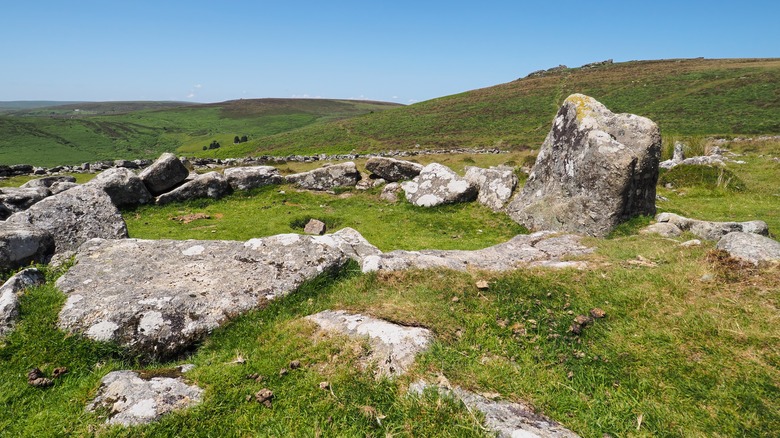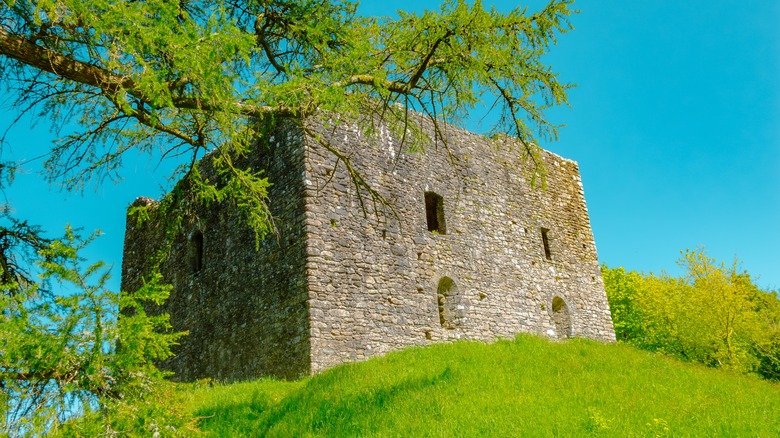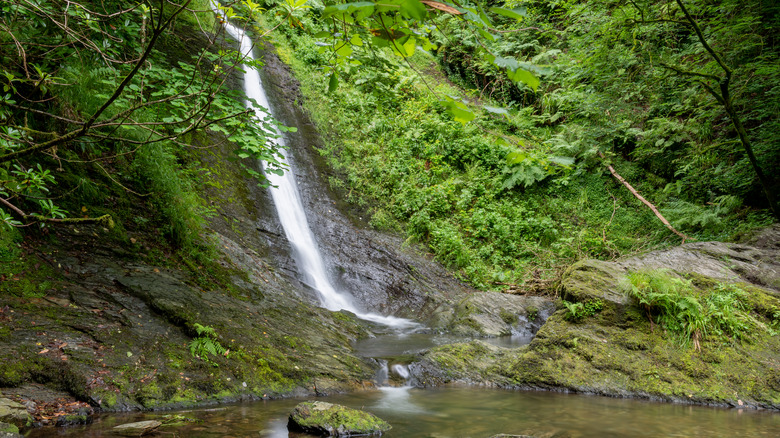This National Park In England Is A Great Destination For History-Buffs
The United Kingdom has no shortage of history. From Stonehenge to centuries of kings and queens to the origins of The Beatles, there is something for everyone in this cultural icon of a country. Tourists come in droves to see sites like Buckingham Palace or Edinburgh Castle, but venturing outside the country's biggest cities can bring quite a bit of unexpected splendor. Highlights away from the hustle and bustle include more history and nature.
Despite having a population density around eight times higher than the United States, the U.K. still has extensive countryside across all entities that make up the nation. There are even national parks that combine history with nature. Old castle ruins are likely not the first thing that comes to mind when thinking of national parks. However, Dartmoor National Park on England's southwestern peninsula has just that and more in its millennia of history. Even Steven Spielberg was captivated by the park while filming "War Horse."
Visit a castle that doubled as a prison in the 13th century
Okehampton Castle sits upon a hilltop at the northern border of Dartmoor National Park. What was once a residence of Hugh Courtenay, Earl of Devon, and his descendants is now just a shell, but intriguing nonetheless as big walls and archways still stand. There is a free audio tour to help visitors imagine what it must have been like from its time as a fortress against invaders to its term as a home for nobility.
Near the western edge of Dartmoor National Park is Lydford Castle (pictured above), which dates back to the 13th century. The prison at this castle became infamous for its punishment before judgment reputation. In fact, the phrase "Lydford Law" became a slang term for anything suggesting cruelty from judicial figures. Thirteenth-century history continues at Hound Tor Deserted Medieval Village. Archaeologists know that the village was abandoned around a century later, but there is no evidence as to why. Today, remnants of what are called longhouses along sloped hills still exist.
Dartmoor National Park combines history with nature
Civilization on the land that makes up Dartmoor National Park goes even further back than the Medieval era. Archaeologists have discovered evidence of farming from the Bronze Age, which lasted from 3000 BC to 1100 BC. Grimspound is a large area of Bronze Age structures, including man-made stone barriers that were likely walls and huts. Grimspound is just over 3 miles from Hound Tor and a walk between the two passes by Jay's Grave. This site is named after Kitty Jay, the subject of a Dartmoor legend. She died by suicide and was buried at the site due to superstitions of 18th-century society — some versions of the legend state that her spirit went on to haunt Dartmoor.
Dartmoor National Park's history is embedded into the landscape, making the park exciting for history buffs and nature lovers. Less than 1 mile from Lydford Castle is Lydford Gorge, which features a waterfall and walking trails. On a hike to White Tor (pronounced wit) southeast of the gorge, you might spot some wild ponies as you look out across the vast landscape.


